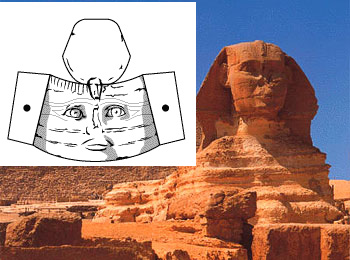
Can’t afford to go to Egypt? Then you can build you own paper version of the age-old Sphynx at home by clicking here.

Can’t afford to go to Egypt? Then you can build you own paper version of the age-old Sphynx at home by clicking here.
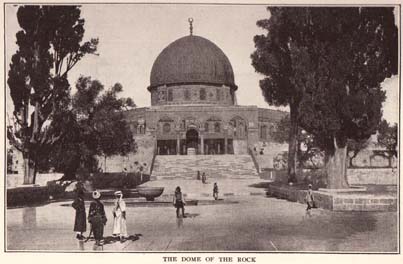
Hurlbutt’s Atlas, p. 137
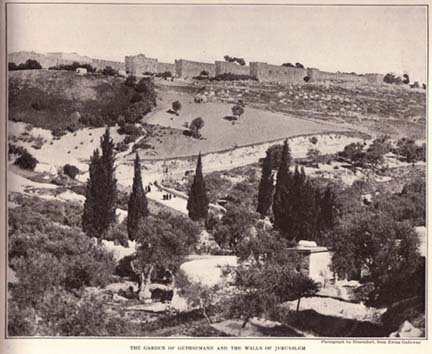
Hurlbutt’s Atlas, p. 133
The Christian fascination with the Holy Land as a window into interpretation of the Bible has a long and indeed fascinating history of its own. Here I continue the thread on Jesse Lyman Hurlbutt’s A Bible Atlas (New York: Rand McNally & Company, 1947, first published in 1882). As might be expected, a large part of the atlas is devoted to Jerusalem. Here are two century old pictures, one of the Dome of the Rock and the other a view of the Garden of Gethsemane looking toward an uncluttered landscape beneath the old city walls of Jerusalem.
[Tabsir Redux is a reposting of earlier posts on the blog, since memories are fickle and some things deserve a second viewing. This post was originally made on October 26, 2010.]
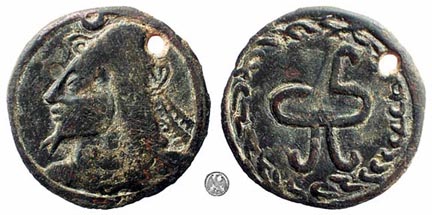
Sogdiana, Chach 3rd century
The Middle Eastern and Central Asian Studies program at Hofstra announces
the Fourth Seminar on Central Asian and Middle Eastern Numismatics in Memoriam Boris Kochnev
Hofstra University, Breslin Hall 217, March 17, 2012
(Directions to Hofstra)
Attendance is free and all are welcome.
11:00 am
Daniel Varisco (Hofstra University)
Opening Remarks
11:15 am
Vladimir Belyaev (Zeno.ru, Sankt-Petersburg) and Aleksandr Naymark (Hofstra University)
Ancient Sogdian Coins from the Center of Kashka-darya Valley
12:00 noon
Stefan Heidemann (Hamburg University)
A Hoard from the Time of the Collapse of the Sasanian Empire
12:45 pm Lunch Break
1:30 pm
Michael Bates (American Numismatic Society, New York )
How Ziyad Made a Name for Himself:
Coins and the Chronology of Ziyad ‘son of his father’/’son of Abi Sufyan’ Continue reading Numismatics at Hofstra
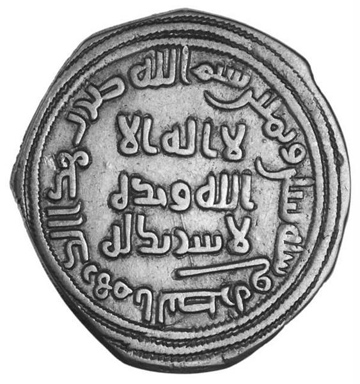
Dirham of the Umayyad caliph Abd al-Malik (685-705), minted 699-741
The American Numismatic Society presents a Lecture
The Wrapped Coin: The Ritual of Coin Giving in the Early and Middle Islamic Period
by Stefan Heidemann
Wednesday 7 March 2012
5:30pm Reception
6:00pm Lecture*
The talk will focus on the cultural context of these coins and the custom of using coins, in many cases special issues, as presentation pieces.
Stefan Heidemann is curator of Islamic Art at the Metropolitan Museum of Art and visiting professor at the Bard Graduate Center / New York. He studied history, art history and economics in Berlin, Damascus, and Cairo; Ph.D. Free University Berlin 1993; ’93 alumnus of the ANS Graduate Seminar. He became assistant and associate professor at Jena University 1994 to 2010, visiting professorships at Leipzig University 2001-2003. Fellowships include German Research Foundation; Harvard’s Center of Byzantine Studies at Dumbarton Oaks, Washington; Institute of Advanced Studies, Jerusalem, Aga-Khan Program of Islamic Architecture at MIT; Fitzwilliam Museum, Cambridge, UK; and others. Samir-Shamma-Prize of the Royal Numismatic Society for Islamic Numismatics 2005. Cooperation with German, British, French, and Syrian archeological missions, in al-Raqqa, Damascus, Aleppo, Masyaf and other sites. Between 2009 and 2009 he taught at The Bard Graduat Center in New York Islamic Art and Material Culture, and served as Associate Curator at The Metropolitan Museum of Art 2010-2011. Publications include Das Aleppiner Kalifat (1994); Die Renaissance der Städte (2002); Raqqa II: Die islamische Stadt (ed. and author) (2003); He edited one Sylloge of Islamic Coins of the Oriental Coin Cabinet at Collection of Jena University and of The Israel Museum, Jerusalem.
Preceding the lecture
A special ceremony will be held for the donation of a rare and unusual Umayyad silver dirham to the ANS cabinet from long-time ANS Member, Hon. Robert H. Pelletreau Jr. The Hon. Pelletreau will present the coin in honor of Dr. Michael L. Bates, ANS Curator Emeritus of Islamic Coins, in recognition of his many valuable contributions to the field of Islamic numismatics. Dr. Bates will speak briefly about the historical context of the coin and its attribution.
Among his 35 years in Foreign Service, the Hon. Robert H. Pelletreau served as Assistant Secretary of State for Near Eastern Affairs from February 1994 to January 1997. Prior to that he served as U.S. Ambassador to Egypt (1991-1993), to Tunisia (1987-1991) and to Bahrain (1979-1980).
NOTE: rsvp required to membership@numismatics.org (212) 571-4470 ext 117 government issued photographic i.d. required for entry
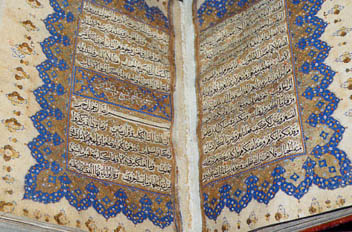
Qu’ran manuscript in Western Library of the Great Mosque, Sanaa
by Arie Amaya-Akkermans, bikyamasr, 13 December 13, 2011
In recent articles on Bikyamasr.com, it was reported at length on the diversity of cultural sites, part of Yemen’s vast cultural heritage, that were threatened with neglect and destruction, partly because of the inability of the Yemeni authorities to preserve them and partly because of the state of unrest caused by the Yemeni uprising – namely the ancient cities of Sana’a, Shibam and Zabid, in which thousands of years of rich history are likely to become yet another casualty in Yemen’s struggle for freedom from the 33-years old dictatorial rule of Ali Abdullah Saleh.
It is fortunate however that these three ancient cities are considered UNESCO world heritage sites, due to the fact that they have received attention from international organizations – most prominently the government of Germany – and some degree of action has been taken in order to minimize the damage, or at least, that was the case until the beginning of the Yemeni uprising. The extent of the real damage done to the sites in the course of 2011 remains yet to be properly assessed in a post-revolutionary scenario.
More unfortunate is the fate not only of other sites but of something much more intangible but equally valuable: The rich intellectual Islamic heritage of the country embodied in over 50000 manuscripts held in many libraries and private holdings. The astounding numbers and the nature of the manuscripts make Yemen one of the most important archival collections in the world, easily rivaling similar holdings of Islamic manuscripts in the national libraries of Cairo, Istanbul and Teheran. Continue reading The Zaydi manuscripts of Northern Yemen
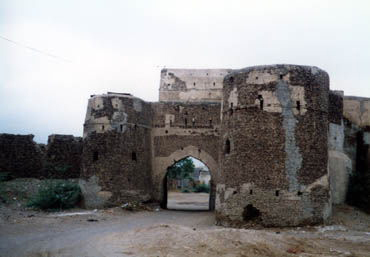
ذكرت مصادر Ù…Øلية بمديرية زبيد بمØاÙظة الØديدة مساء يوم أمس الجمعة بأن Øريقا” هائلا” تسبب ÙÙŠ تشويه المنظر التاريخي لسق٠المبنى الأثري الواقع ÙÙŠ بوابة سهام بالجهة الشمالية لمدينة زبيد القديمة بمØاÙظة الØديدة ØŒ بالإضاÙØ© إلى إتلا٠كمية كبيرة من الأخشاب المزينة بالنقوش الإسلامية الأثرية جراء الØريق الذي لم تعر٠أسبابه Øتى اللØظة .
وأشارت مصادر أمنية بالمديرية بأن ألسنة اللهب اشتعلت ÙÙŠ المبنى الأثري التاريخي لبوابة مدينة زبيد الأثرية المعروÙØ© ببوابة سهام ما أدى إلى اØتراق سق٠البوابة بالكامل إلى جانب كمية كبيرة من الأخشاب القديمة المزينة بالزخار٠والنقوش التي لا تقدر بثمن.
وأضاÙت المصادر بأن أبناء زبيد لم يتمكنوا من أخماد الØريق الذي تصاعد بشكل مخي٠ÙÙŠ المبنى الاثري ولا تزال التØقيقات جارية لمعرÙØ© أسباب ودواÙع الØريق.
هذا وكانت زبيد قد أدرجت ÙÙŠ قائمة التراث الإنساني العالمي ÙÙŠ العام 1993Ù… , واعطت منظمة اليونسكو التابعة للأمم المتØدة اليمن مهلة للبدء ÙÙŠ تنÙيذ برنامج إنقاذي شامل Ù„Øماية ما تبقى من المعالم الأثرية ÙÙŠ المدينة التاريخية والتي باتت مهددة بالاندثار قبل أن تباشر “اليونسكو” ÙÙŠ إجراءات شطبها من قائمة التراث الإنساني بصورة نهائية.
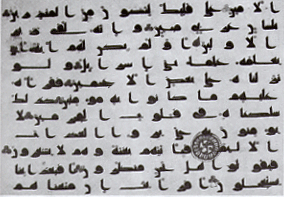
Kufic Quran, second/eighth century
by John F. Healey and G. Rex Smith
The Kufic Quran has reached its fully developed form by the end of the second/eighth century. It was invariably written on parchment, the letters in a black ink with dots, often red and green (the latter used with initial hamza) though sometimes in gold only, representing short vowels, and black strokes, single and double, distinguishing letters. The text thus written is made difficult by the spacing which would seem to be more to do the calligrapher’s artistic inclinations and his desire to justify his text precisely than with Arabic orthography. “Justification†here refers to what became the standard practice in printed books of making the lines even in length both at the beginning and at the end of the lines. Verse endings and other pauses call for gold: usually a cluster of three balls, one sitting on two others and quite elaborate roundels. Continue reading Arabic in Kufic Script
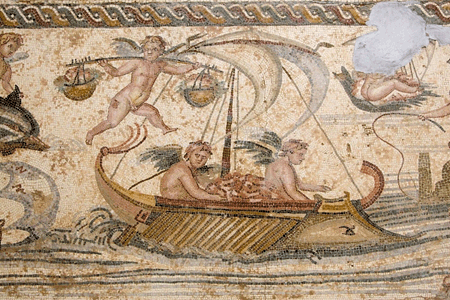
It seems as though Qaddafi is about to be defeated in Libya. No one knows what kind of government will replace him. But we do know that a long time ago this was a bastion of the Roman Empire. Above is one of the mosaics from Sabratha.